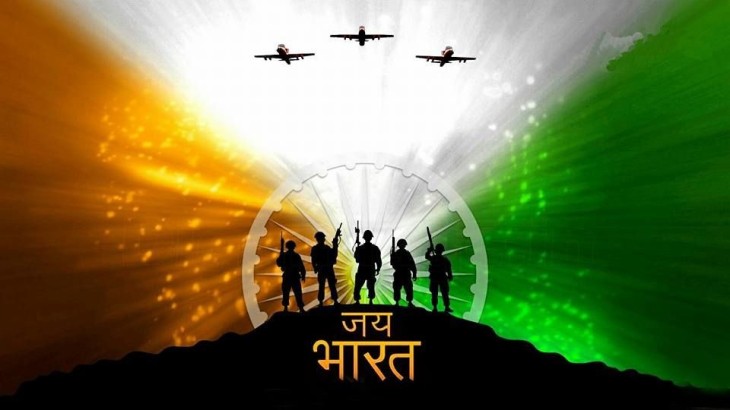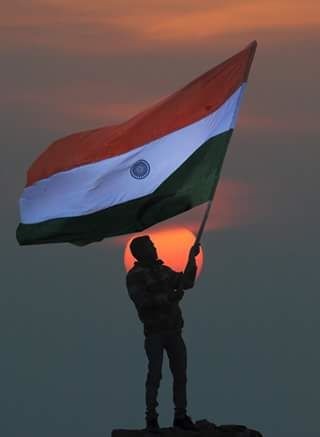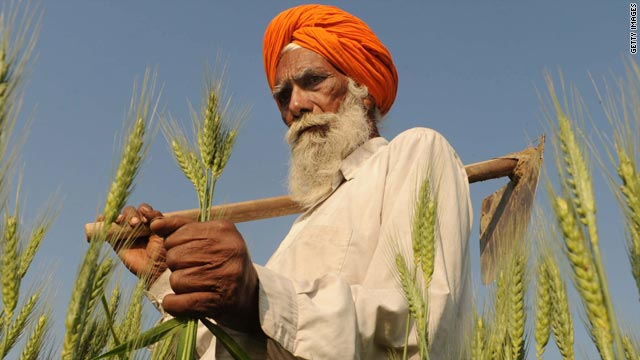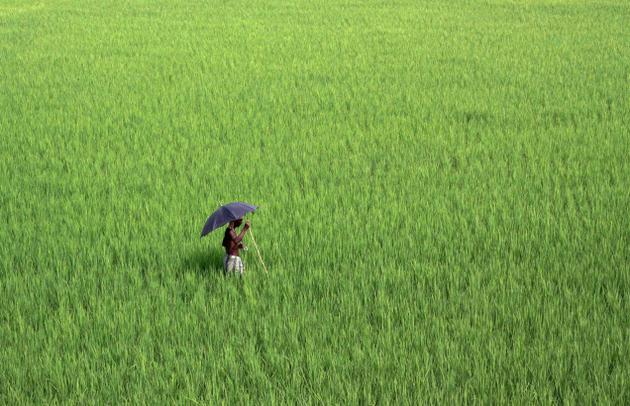At the beginning of every year, it’s a practice for me to browse the year’s calendar to figure out the number of public holidays I’ll be entitled to at work. The usual suspects are Makar Sankranti, Holi, Republic Day, Independence Day, Ganesh Chaturthi, Eid, Diwali, Christmas, and a few more in between. It gives an inexplicable joy to count the number of such public holidays. This year, however, quite a few of these festivals – religious and national – occur over the weekend. Opportunity missed.
Independence Day was on Saturday this year. So one holiday struck off the list. The annoyance lingered initially, but then I thought, what sense would it have made for the holiday to be on a weekday? Just another day, right? Take the morning to relax, spend the day at leisure, probably go out, socialise, drive down to the outskirts of town, or do anything else that is warranted of a holiday. We ensure we make good use of such ‘opportunities’.
The usual practice I’ve been observing since I started working, about six years ago, goes such… The day before a national holiday – Republic or Independence Day – is announced traditional day at the bureau. Get folks to dress up in ‘Indian’ clothes – sarees, salwar kameezes for women, kurta pyjamas for men (lungis in some cases) – organise rangoli and flower decoration competitions, prepare food in pigments of the tricolor, and a few more things here and there. Walk around the workplace admiring people donning ‘unusual’ clothing – dressing in the corporate world is as interesting as signing forms to get your passport made; it’s boring – and click pictures, or get yourself clicked with your mates, each one a mini flag in herself (women would don the saffron, white and green with far more alacrity than men would; can’t quite imagine a man wearing a green kurta with white pyjamas and a saffron stole with blue designs… get the drift?). Say cheese, flash your best smiles, call it a day, and get back home.
On the other end are companies who announce ‘freedom’ and ‘independence’ sales, wherein you buy a pair of overpriced shoes, and get 10% off on purchase of the second pair. How interesting! Also, how liberating, no? I marvel at marketeers who even approve such lousy schemes to pass off on days of national importance. How can offering a discount make for an ‘independence’ sale? Apart from a chance at extending crass consumerism, what is it?
What did our freedom fighters and soldiers struggle for?
They struggled for future generations to take birth on soil free from the clutches of anything or anyone who would curtail the true progress and development of its people. What for us? We have internalised and trivialised days of national importance to such an extent, it’s a joke to even ‘celebrate’ these days. Independence Day means a bunch of zealous people organising flag hoisting ceremonies and blaring ‘desh bhakti geet’ to make others feel all zealous and patriotic themselves. There will be random renditions of the national anthem played at any interval convenient to anybody, and a few of us will have to stand ramrod straight, leaving whatever it is we are doing, so that we convey our respect to the anthem, and thus, to those who released our country from the rule of the British.
Most of us will buy flags, lapel pins, posters, and other such bric-a-brac to establish our patriotism, we will proclaim with momentary pride ‘Jai Hind’, we will unfurl the tricolour in housing societies, offices, schools and colleges with gusto, we will feel one with those around us when we sing throatily ‘Jana Gana Mana’.
The next day, all of this vanishes. Or it goes into dormancy, only to be revived for the next national holiday. This time round, it will be Gandhi Jayanti in October, and then Republic Day in January. We have a calendar we can follow sub-consciously. This makes life convenient. Patriotism can be revisited as per requirement. Isn’t that what most of us want from life eventually – the freedom to choose to remember or forget, to feel or not feel, to be or not be?
I am not against any of these practices society at large follows. In fact, there have been plenty of instances when I’ve participated in these occasions with enthusiasm. However, I’ve always known the worth of my nationality and Indian-ness. Republic Day, Independence Day, or Gandhi Jayanti, I’ve never waited for these days to ‘feel’ Indian. There are a lot like me, persons who do not need an occasion to express the spirit of being an Indian. They live, breathe and embody India every single day, in nearly everything they do.
That isn’t to say we dress only in Khadi, or sip tea only in clay cups, or carry cotton jholaas with us wherever we go. We do ‘normal’ things – we drink coffee at Starbucks, we eat at JW Marriot, we wear Nike, we watch Mission Impossible, we drive Volkswagen, we travel abroad. Then what is it we do differently?
We do nothing differently. We only strive to be one with everyone else. We only look at ways to move ahead as one whole. We visualise our country as one geography. We try to do things that will help make life better not only for our own selves, but also those of others.
No, we don’t sing songs of patriotism on designated days, we don’t send WhatsApp or Facebook or Hike messages extolling the greatness of our country. Most of us don’t do this because we are lazy or pompous; we don’t feel the need to reinforce our patriotism through such means, because we are patriots, not parrots. 🙂 We don’t have to mimic society at large to feel one with the country of our birth.
We do our bit everyday… We don’t litter, we try not to bribe, we try not to subscribe to double standards and we try not to be hypocrites (trust me, doing this is not easy), we try to obey and follow traffic rules, and we try to work hard without cheating anybody (cheating does happen sometimes, unfortunately).
Let’s be honest; a lot of us still resort to certain infirm practices such as bribery if absolutely necessary, and there is nothing wring in admitting it. Changing ill practices is a time consuming and tedious process, and the more open we are in acknowledging our unrighteousness, the sooner we will be able to curb such practices. Knowing we are not the only ones indulging in activities such as bribing and polluting will help us talk about such instances openly, and thus, address the underlying issues in a more logical manner. Where we falter as a nation is in our stance of wanting to be the best in everything we do, and in being perfect. Zero crime, zero bribery, zero pollution, zero corruption. We have to live up to the ideals the West and East and North and South have set for us without even consulting us.
Yes, Switzerland is a picture perfect country, where the premier of the nation rides to work on the intra-city metro network. Denmark, the Netherlands, Belgium and the like have a large bicycling population, and thus, they have low pollution levels. China is a warehouse of upcoming world-class sporting talent, the US boasts of an innovative education industry and is the world’s start-up incubator.
That’s lovely, isn’t it? Each one of these countries has so many cool things to feel proud about. For us, however, we have only our troubles, problems, and inadequacies to think and feel sorry about. Corruption, population, crime, rape, poverty, illiteracy… That’s what India stands for. But just for our convenience, to feel good about our country sometimes, we sing and dance and go all gung-ho about India by way of tricoloured dressing, patriotic songs, and showcasing paper-plastic flags everywhere.
Do we realise the power of plenty we hold? Volumes – that’s what every business dreams of achieving in order to grow into a behemoth. There is value in volume. The more a company sells, the more it earns, and the brighter its fortunes. Why don’t we see the value in our voluminous population? Yes, opportunities, although existent in adequate amounts, are not accessible for everyone. We are 1.25 billion people – young, old, middle-aged. By 2020, we will be the youngest nation in the world. Have we forgotten the renaissance youth promises? Do we not see the crest of growth and development we will be riding in a few years from now?
Every economy undergoes a predictable growth graph. First, there’s a rise of population, with a commensurate increase in demand for goods and services, which means a period of prosperity by way of increased incomes. Then comes a plateau in the graph owing to a shift from an agrarian to a service society. And eventually, the graph takes a turn downwards, signalling the advent into a mature state. We are on the upward path now – we should be rejoicing, and NOT crying over our population! Our strength is in our volumes. As a nation, we can and will drive value from these volumes when the time is right.
Right now, we are in a phase of growth. Then will follow consolidation, and finally, we will establish ourselves as a powerhouse. No, I’m not making this up, and it’s not an expression of latent patriotism. I am an Economics student, and I work at a large organisation. I am no scholar or expert, but my common sense makes me view the growth of my country in terms of the growth of any other corporate. Every corporate has undergone a stage of chaotic growth, with expenditure overrunning income, followed by a stage of methodical consolidation, wherein income finally overtakes expenditure due to increased efficiency in people and process development. The final stage sees the corporate establish itself as a market leader in its field of operations – banking, automobiles, defense, etc. Once a company reaches the finality of market leadership, it moves its focus to innovation so that it can remain at the top.
The US and Japan are nations that have reached positions of influential leadership. The former has been a laggard in growth since the financial crisis of 2008, while Japan is staring at a human resource catastrophe, with calculations pegging a loss of nearly one third of its population in the next five decades (40% of Japanese will be over 65 by the year 2060). The US is also a lost cause with alarmingly low growth rates; its immigrant population keeps the country alive and kicking, quite literally so.
While we always look at the ‘problem of plenty’ “plaguing” India, have we ever given a thought to those countries that are experiencing abysmal low, may be negative, growth rates? How many of us realise the devastation a country without adequate human resource will be heading into?
Yes, India is a far cry from a developed nation. That’s alright; every human being has her/his own growth rate. The same can be said for countries. Some grow quick, some don’t. Some of us have been and continue to be late bloomers – I am one such. Our country is also a late bloomer. So? Should we be ashamed of it? Should we choose to be selective with the proclamation of our nationality, choosing to exhibit our Indian tag only when an A.R Rehman wins the Oscars for Slumdog Millionaire, or when a Sundar Pichai becomes CEO of Google, or when a Satya Nadella begins to head Microsoft, or when a Navin Jindal becomes an American President hopeful? What kind of Indians are we, then?
We are a nation of farmers. So? Is that embarrassing? How come farmers of Europe, the US, and other ‘exotic’ countries, with their shabby dressing, sticks in hand, and bunch of goats/cows/buffaloes/camels/huskies, appear so appealing, while the appearance of our own food growers – emaciated most of the times, with equally emaciated cattle, short on food themselves so that they can earn money by selling the food they grow to us city dwellers – make us cringe with embarrassment? The men wear crumpled and stained dhotis, the women wear bright sarees with blouses that don’t match, the children are mostly naked; this is our reality. Why don’t we embrace it for a change? Why don’t we begin to love what we already have?
Yes, we have droughts and farmer suicides. The middlemen are menaces; the public distribution system is a failure in many instances. But what about the MNREGA (Mahatma Gandhi National Rural Employment Guarantee Act), which has budgeted about Rs. 35000 crore to provide seasonal employment to the rural populace? Again, this exercise hasn’t been a success per se, but until Dec’13, about 3.81 crore households undertook some form of productive employment, with an issuance of about 12.72 job cards in totality. That is a large number of seasonally/permanently unemployed people getting gainfully employed. The effects of the world’s largest social security scheme have been multifarious. The leakages in funds and benefits haunting the MNREGA aren’t something any of us are okay with, but things will get better. They have to. We are moving into a digitised world; a lot of our transactions will go online in some years. People will hold the government responsible in a manner not seen hitherto.
We are a chaotic country. There is so much here, most of us don’t even know what to do about the stuff we already have. Minerals, forests, adequate sunlight (solar power is the way forward for most countries across the globe given the imminent failure to find new oil reserves) – we have it all. Some of this is in abundance, and we can’t really understand how we should exploit all that we already have.
Now, to get back to an objective view of what and how India is… India is also a centre of corruption and unfortunate poverty. We’ve had a President who spent a few crore rupees in fulfilling her fancy of globetrotting with her brethren. She was an embarrassment. In fact, she still is; recently she insisted the government sponsor her intra and inter city travel costs. For the first woman president of the country, she was a letdown. We have one of the world’s richest persons living in our country, and the approach to his abode – the most expensive in the world, with more than 600 personnel hired to man and maintain the steel and glass structure – is riddled with slums. One can find beggars shrivelled due to hunger a little away from where he lives. The haves and have-nots are at loggerheads with one another, the only commonality between both being the quest for making money – the former for attaining more glory and power, the latter for making arrangements for one meal in a day. The chasm is disturbing and disgusting.
We believe in women empowerment, yet female infanticide is rampant in many pockets – in seemingly educated and literate urban areas, too. We bear too many children as it’s considered a sign of prosperity, yet we have the world’s highest population of child labour. But we also have Kailash Satyarthi, who has been spearheading a movement to mitigate and therefore eradicate child labour from India. There are farmer suicides in Maharashtra, and there are the wealthy apple growers of Himachal. Yes, the chasm is apparent here, too.
Lets not forget even the ‘best’ countries have issues of their own. The US, for its promise of the American Dream, has the highest incidence of gun-related crime in the world. The Middle East is burdened with inter and intra religious strife; people, and a large number of children, die in that region everyday. Europe is financially instable for the most part – there are exceptions like Germany, of course, but Greece is also an exception for the wrong reasons. South American countries such as Brazil showed promise of growth, but the country is stagnating now, and the drug cartels operating unabashedly are not something the country is proud about, I’m sure. Want more? Let’s look at Turkey, a democracy founded by Mustafa Kemal Ataturk, a country with a glorious, egalitarian past… But it ‘s current President, Tayyip Erdogan, famously quoted “I see abortion as murder.” So much for being a forward looking country.
There are a lot of instances of conflicting ideas and ideals emanating from the same country. These were just a few I spoke of. Yet, I will press forth with my quest for sunshine when I say India is a success in the making. No country is perfect, and it never will be. Honestly, perfection is boring. We should have an imperfect country so that we can keep working towards making it better tomorrow than it is today. The young population wants to make life better, and to ensure this happens, many of them are going the entrepreneurship way. Building something indigenous is always a positive development, because it makes use of local resources – human and inanimate – and this creates a chain reaction of job growth, demand growth, and therefore, income growth. It’s a natural phenomenon, and for all the vagueness economic theories are built on – the job-demand-income growth theory does play out in practice as well. And hence, for all the shortcomings India houses, there are ordinary miracles taking place under our noses, in front of us every single day. Whether we choose to view it from the lens of positivity and progress, or negativity and regression, is a choice we must make.
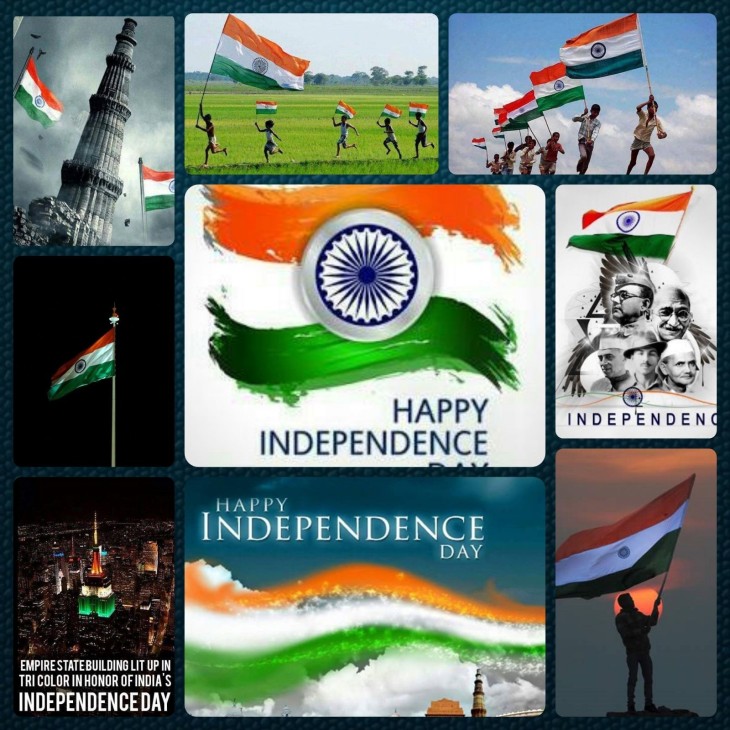
We must move onward; our journey to maturity is going to be long & tough, but are a patient people, and struggle is second nature to us
So, I will choose to go about my life in the same non-descript manner, whether it’s Independence or Republic Day or Gandhi Jayanti or Netaji’s birth anniversary. A F1 car on the circuit performs only when it’s on the tarmac, not when it’s at a pit stop. It does need the halt off the track to refuel, but that makes its pit stop a critical, strategic and productive stop to ensure it gets back on the tarmac and emerges a winner. I’d like to view our public holidays like pit stops, where we do stop, make some adjustments, refuel, and get ready to zoom once we’re back on the track. It’s a race to the top, and we are racing with a host of other technologically, politically, economically, socially enhanced countries. But that doesn’t make these countries winners. Not giving up in the race makes winners. It’s great if you get to the helm, but the journey in trying to get there isn’t that bad either. Again, so what if we aren’t at the helm of technology, politics (can any country ever be at the helm of politics? Silly point.), or manufacturing? We are a nation of plenty, and lets choose to look at the potential of plenty rather than lament about the lack of opportunities. Opportunities do exist, albeit in short supply. Now, what do we do when opportunities are in high demand due to a greater population, and hence, more difficult to catch hold of? We create more. Our present and future generations – the ones tending towards the entrepreneurial life – will be supplying opportunities. And the world, then, will keep looking and wishing it was them in our place; not the other way round.
Now, to get back to the calendar… When is the next public holiday?
JAI HIND!
